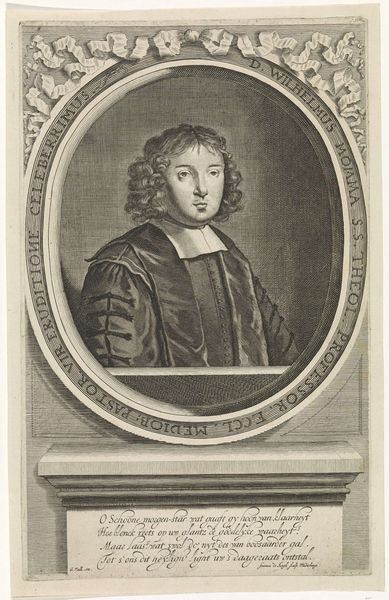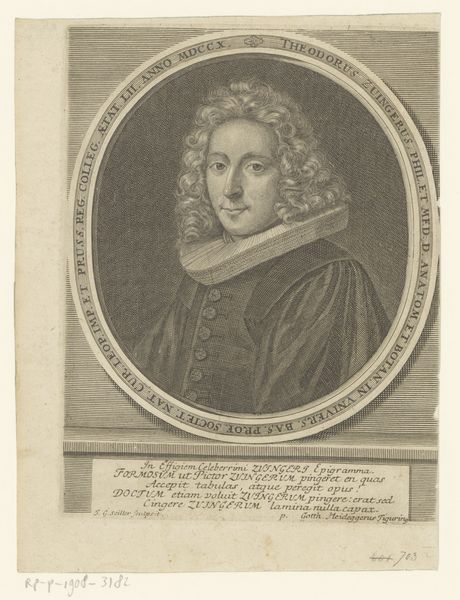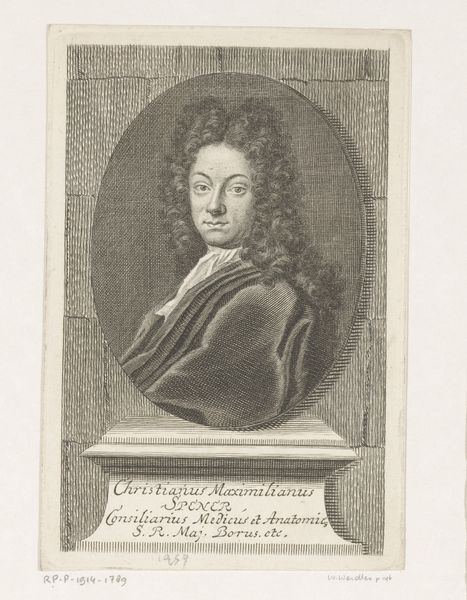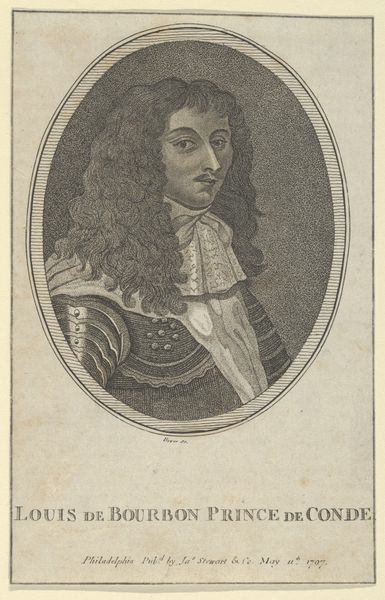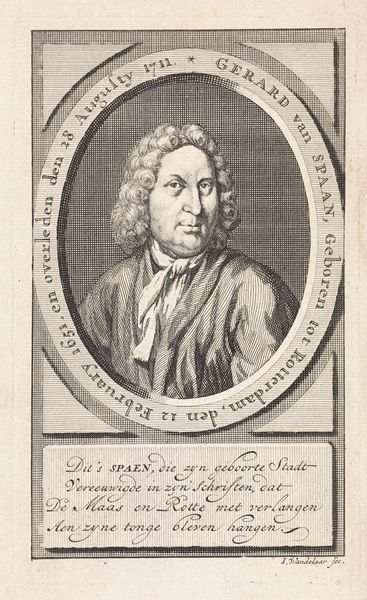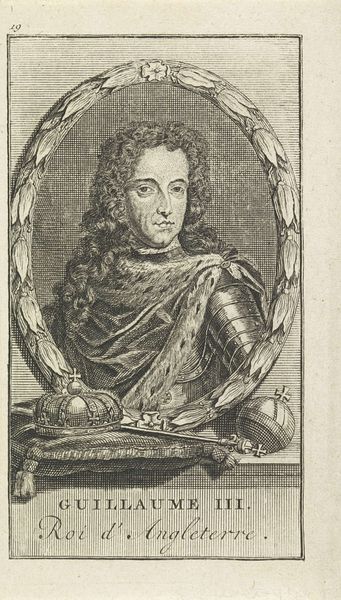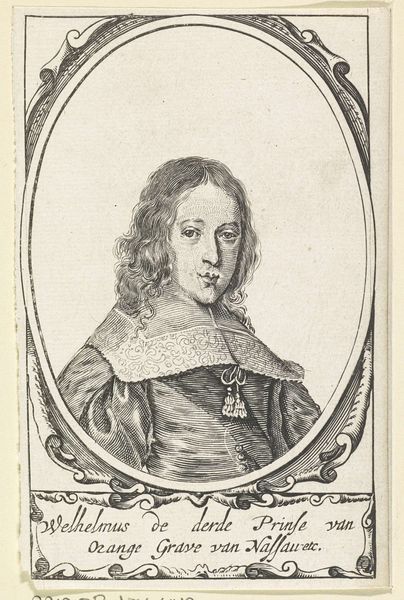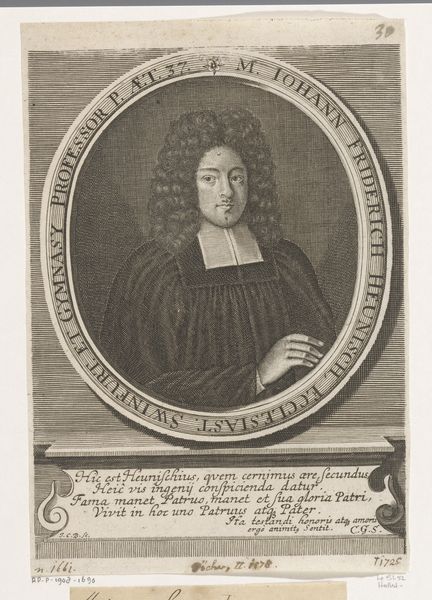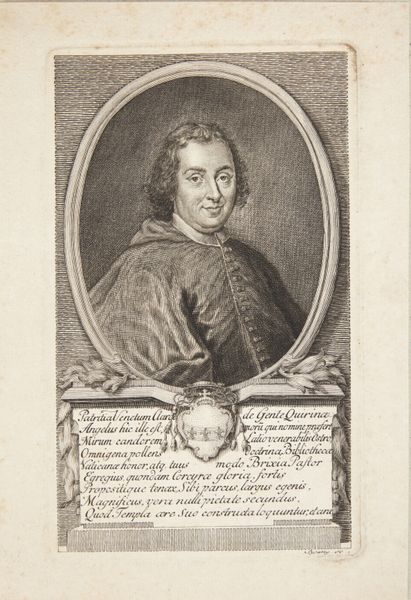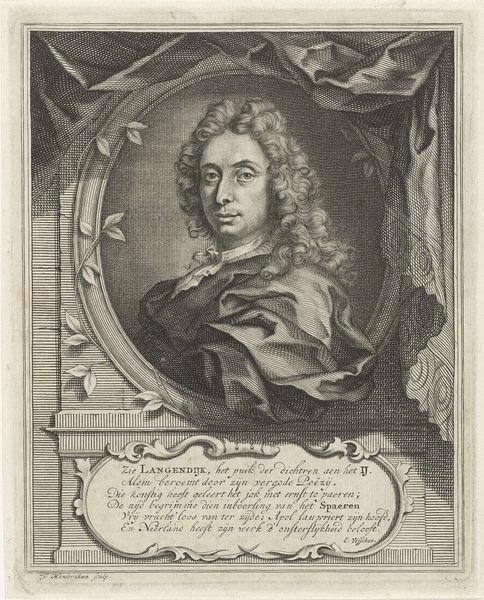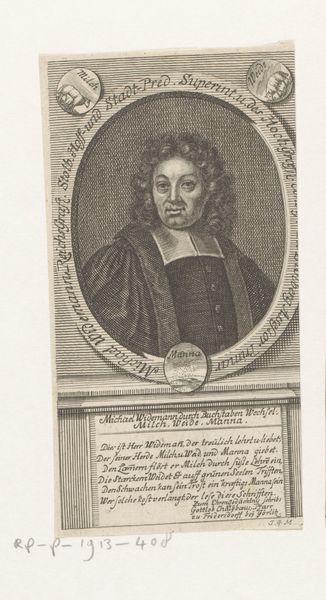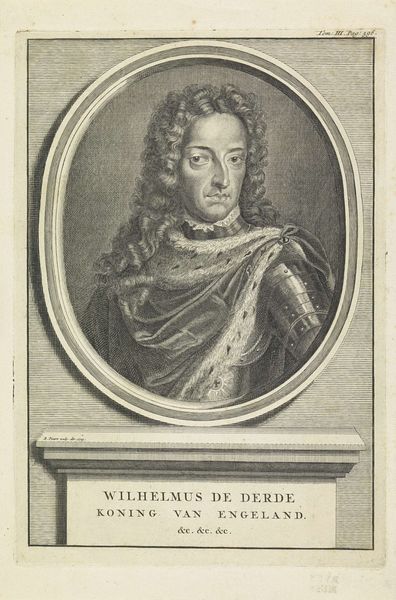
engraving
#
portrait
#
baroque
#
history-painting
#
engraving
Dimensions: height 203 mm, width 137 mm
Copyright: Rijks Museum: Open Domain
This engraving of D. Cajetanus was made in Italy around 1713 by Andrea Magliar. It presents us with an intriguing set of ideas about the sitter’s identity, and its cultural context. The image creates meaning through visual codes of class and status. Made in the Baroque style, D. Cajetanus is presented as a person of substance, a member of the Italian scholarly elite. We know this from his dress and bearing, from the Latin inscription, and from the frame itself. This man is clearly somebody of note, who is invested in preserving his image for posterity. But what was the purpose of such an image? Was it a gift for a patron? Or perhaps a self-aggrandizing commission? To better understand this, the art historian might delve into the archives. What details might we find about the sitter and the artist? What was the function of portraiture in Neapolitan society at this time? The meaning of art is always contingent on its historical context.
Comments
No comments
Be the first to comment and join the conversation on the ultimate creative platform.
